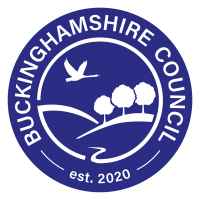- By Emma Rundle, Melting Pot Creations
- 8 May, 2017

Share by email
As a copywriting freelancer, my business relies upon referrals, word of mouth and testimonials from my existing clients. I network extensively to make contacts but, even then, any case I build to win business is infinitely more credible if I can throw in some genuine second opinions.
This age of internet reviews hasn’t been without criticism and controversy though, as the inevitable greedy side of human nature took over and reviews were found to be for sale on a black market of fake customers. So, how do the sole traders and SMEs among us make the best use of the precious commodity that is a testimonial from a happy customer?
Request a referral
Initially, it’s a case of having the courage of your convictions, valuing the work that you do, and fronting up to ask your customers to write some words. I always request recommendations through LinkedIn as it is virtually impossible for them to be faked, due to the system being set up to formally request, edit and display them. It’s worth noting though that recommendations on LinkedIn are only available for individuals, you can’t get them on company pages. The Facebook business page template now features a review tab, so make full use of this to ensure it’s as easy as it can be for your customers to comment.
Share the love. If you receive a good service from someone, write a recommendation straight away. It’s a good habit to get into. After all, if everyone took this approach, purchasing quality goods and services would be that much easier in the future.
Makes those words work
Once you’ve got a great endorsement, use it as much as you can. Think about your various channels; blogs, social media, marketing campaigns and so on, and try to work the testimonial words in as much as possible.
Try using different elements of your review for different channels. For example, I received a testimonial that used the word ‘exceptional’. I wanted to make maximum use of such a great word so, as well as using the recommendation as a whole on my testimonials webpage, I worked the word ‘exceptional’ into my strapline, used an app to create a ‘meme’ with a short pull quote from the review, and tweeted links to my website using the text “officially an exceptional copywriter”.
You don’t need to repeat the review verbatim; you can pull out phrases, quotes and even single words and have some fun getting your message across.
Tasty Testimonials
As webpages go, your testimonials page is probably one of the most important. You should always have a direct link to this from your home page and even feature live links to your customers’ words. But testimonial pages are often very text-heavy and a little predictable.
Give some thought to livening this page up, making it easy to read for those checking out your credentials and perhaps even using it as a way to draw people in to your website further. You could feature your testimonials as a gateway to a full case study of your work. If your audience can find a story behind the accolade, they are more likely to ‘imagine’ themselves as your customer. They may find similarities between their requirement and that of the happy customer; something that is very likely to have a persuasive outcome.
Use imagery and videos to offer something different
Case studies also open up the opportunity to use imagery, especially if you are delivering a service that is particularly visual, or if you have brightly coloured products to showcase. At the very least, you should try to include a headshot or corporate logo to each review to break up the text and to add further credibility to the words.
A great way to liven up your testimonials page is to encourage customers to provide you with video reviews. Whether you get them professionally recorded or ask them to speak to your camera phone, capturing their pleasure in your product or service on the spot is powerful stuff.
However, it’s not easy to convince a person to speak to the camera, so you might want to offer an incentive or freebie to anyone who is willing to do so. Provided you offer a reward in return for someone’s honest feedback – as opposed to offering it in return for a ‘good review’, this approach is perfectly ethical.
The ‘Halo’ effect
It’s always fantastic if you can get a review or endorsement from a household name or a FTSE100 company but, for those of us who predominantly work with smaller businesses, we may find the brands don’t necessarily convey what they do. To give a review more context for those reading it, consider putting a little more information in addition to the name of the customer and company.
When I’m helping clients with their copywriting, instead of referring to “Adrian Smith, Owner, Cogs”, I might say “thanks to Adrian Smith, Owner of Cogs, our local bike shop, for the great review”. Or, if your review is from Emma the freelance copywriter, you could sign off by saying “Emma Rundle, freelance copywriter, Melting Pot Creations” rather than giving my title as ‘Owner’.
By doing this, you might find people looking at doing business with you can better identify with some of your existing customers and gain peace of mind from their reviews.
Bad review, good response
In some cases, setting up the opportunity for reviews invites negative feedback as well as positive. Unfortunately you can’t control this, although, obviously, you would hope that any review would be truthful and constructive. That’s why it’s imperative that you always respond immediately to any negative feedback. Seeing that you care enough to try to resolve a customer’s issue may be enough to leave a potential customer with a positive impression of your business.
Ultimately, adding testimonials to your website and incorporating your customers’ opinions into your marketing campaigns is a great way to showcase live, up-to-date information related to your products or services. In addition to adding new content to your website on a regular basis, people are increasingly drawn by reviews and recommendations in a world where competition is rife and much business is done online. Set out to prove the value of what you have to offer, and let your customers do the talking.







